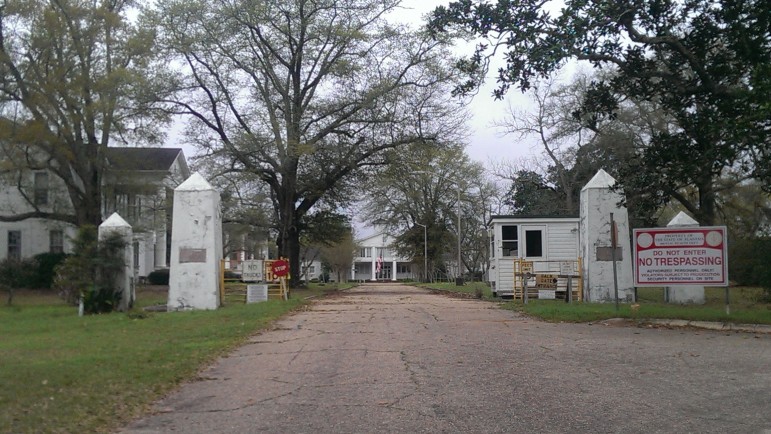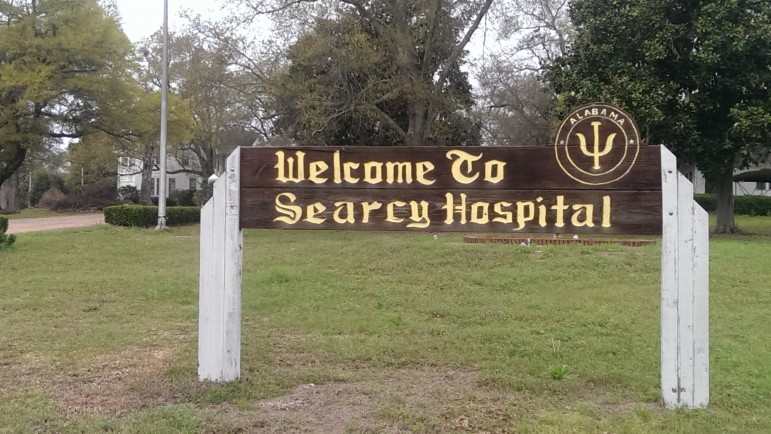Mt. Vernon Arsenal, Searcy Hospital Among Most Endangered Historic Places
The National Trust for Historic Preservation announced this week that Mt. Vernon Arsenal, which later became Searcy Hospital, is one of America’s 11 Most Endangered Historic Places for 2019.
The site is just outside of Mobile in the town of Mt. Vernon, Alabama. The arsenal was constructed in the 1830s and supplied military equipment to regimens in Alabama and West Florida. According to documents filed with the National Register of Historic Places, the Mt. Vernon Arsenal is one of just two surviving arsenals established during this time.
During the Civil War, Confederate soldiers seized the site and controlled it until the end of the war. The arsenal was then converted into barracks for the U.S. Army.
From 1887 through 1894, Mt. Vernon housed Native American prisoners of war, including the Apache leader Geronimo. These prisoners lived in constructed villages on the grounds of Mt. Vernon. Many of them were later moved to Fort Sill, Oklahoma.
In the early 1900’s, Alabama converted the buildings at Mt. Vernon into a state psychiatric hospital for black patients, which was later renamed Searcy Hospital. When it first opened, Searcy reportedly employed one doctor to treat more than 300 patients. The hospital was eventually integrated in 1969 and remained open until 2012.
Since Searcy Hospital closed, the site has remained vacant. Often referred to as the Mt. Vernon Arsenal/Searcy Complex, the area includes over 30 buildings, which are owned by the Alabama Department of Mental Health. Tiffany Tolbert, a senior field officer with the National Trust for Historic Preservation, says the historic location is at risk of falling apart.
“The structures on the site are deteriorating and it is in need of a preservation plan and revitalization,” Tolbert says.
The Mt. Vernon Historical Society, a local group in Mt. Vernon, has worked to preserve part of the site. Tolbert says adding the location to the national list of endangered historic places may help encourage state leaders to take further action.
Increase in military aid to Ukraine marks a shift in White House policy toward Russia
The Pentagon and U.S. military officials in Europe are working with NATO members to ship more Patriot missile systems to Ukraine and release more munitions that were briefly halted.
U.S. senator wants DOGE out of sensitive payment system for farmers
Sen. Tammy Baldwin, D-Wis., wants the USDA to revoke high-level access granted to the Department of Government Efficiency to a database that controls payments and loans to farmers and ranchers.
Lawyer says an Alabama teen who was killed by police was shot in the back
Authorities have not released police body camera video of the June 23 encounter or disclosed the name of the officer who shot 18-year-old Jabari Peoples in the parking lot of a soccer field in the affluent Birmingham suburb of Homewood. They also haven't released the findings of the county's official autopsy.
An Israeli restaurant owner quits a controversial Gaza food program after criticism
Shahar Segal, who runs popular restaurants around the world, has left his role as a spokesman for the Gaza Humanitarian Foundation amid calls to boycott his businesses.
Trump’s pick for U.N. Ambassador grilled over Signal chat scandal
Former national security adviser Mike Waltz, who was removed from office amid the Signal chat controversy, spent Tuesday in the Senate confirmation hearing for his nomination as U.S. ambassador to the United Nations.
5 takeaways from the 2025 Emmy nominations
Apple TV+ must be happy about how many nominations they've raked in this year for hit shows including Severance and The Studio, NPR critic Linda Holmes says.










